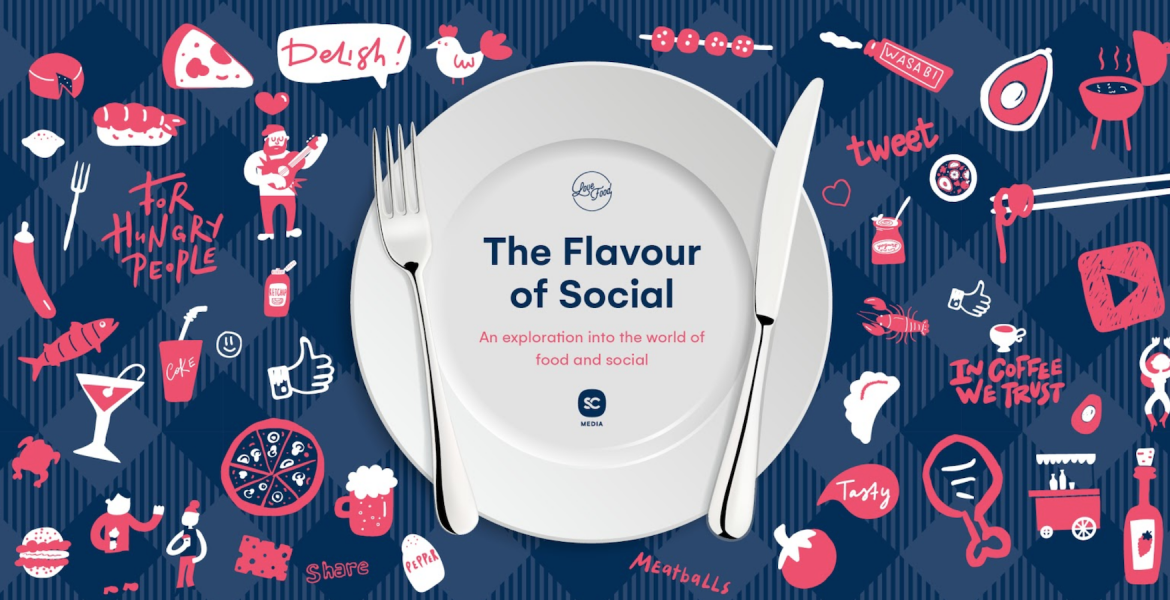Food and drink are a necessity in our lives. They’ve helped us cross borders and have brought cultures together. But it wasn’t until the agricultural revolution that our relationship with both changed forever. Fast forward to the Internet age and our interest in food and drink hasn’t slowed down; it’s sped up at a tremendous pace. Our tastes and preferences are continually adapting and becoming more complex, while marketing from restaurants and supermarkets continues to tempt us.
In 2018, a UK government report put consumer spending on food, drink and hospitality above £226 billion. But the scale of this ever-growing industry presents a serious challenge.
Whether it’s becoming flexitarian or liquefying food for essential nutrients, our digital times and the trends they’ve inspired have also stumped many brands and marketers. Social Chain Media wanted to investigate our foodie audience to help both parties understand this challenging, exciting and lucrative industry. We’ve done so through our Love Food community, which is one of the most engaged food and drink pages on social with almost 10 million fans cross-platform. The following is some of the findings we uncovered.
Food Comes First
Foodies have become obsessed with food and drink experiences. We now pursue them more than any other of life’s passions. 54% suggest they spend their disposable income on food and drink experiences more than any other activity or interest. We’re also 2.5 times more likely to have food and drink as our biggest outlay compared to fashion, which is the next most popular area of spending. Food and drink dwarfed travel, sports, gaming and music, with an average of 12 times the number of people spending on cooking or dining before any other leisure activity. People who lived in urban locations were 28% more likely to spend their disposable income on food and drink experiences first, compared to those who lived in more rural areas.
What Are They Eating?
Fast food and chain restaurants are the most visited venues in the hospitality landscape. They have extensive national coverage, large scale marketing campaigns and a familiar offering. That’s why, on average, 70% of people said they’d been to at least one in the last six months.
Independent restaurants still play a role too, with 46% of foodies visiting them in the last six months. Pubs are 60% more popular than bars and 160% more so than nightclubs, possibly due to their cultural standing and convenient locations. But in the face of rising costs and competition, many pubs have now diversified to offer extensive food menus. By covering all meals in the day, they are bidding for a greater share of the hospitality market. Some venues once considered niche, such as milkshake bars, food halls and street food, have also firmly established themselves in the mainstream.
Above all, hospitality will forever struggle with supply and demand. Many new trends fail to establish sustainable locations, but artisan bakers, craft beer bars and vegetarian restaurants have found an initial foothold in the market.
Tasting New Cultures
Digital has made it easier to discover new foods from around the world, which has led to incredible diversity in the cuisines we enjoy. Major staples made famous in previous decades like Italian, Chinese and Indian are still the UK’s favourites. But that hasn’t stopped many new food origins establishing themselves. American-style food has seen a steep rise in popularity in the last five years and now sits as the fifth most favourable cuisine. And a relatively new cuisine to the UK that has made a big impact is Mexican. Nachos and enchiladas have managed to establish Mexican food as the sixth most popular cuisine, with over 44% of foodies saying they’ve visited a Mexican restaurant in the last six months. On average, one in four foodies has eaten Greek, Thai, Spanish, Caribbean, French, Portuguese, Middle Eastern and Japanese food in the same time frame. Eastern European and Asian cuisines, such as Korean and Vietnamese, have also started to build a notable following after having little presence in the UK previously. Foodies who live in urban locations were 16% more adventurous and more diverse with their food choices, compared to those in more rural areas.
They were more likely to have eaten all the listed cuisines in the last six months, apart from English, Indian and Chinese. Suburban dwellers ranked the highest for a number of cuisines, such as Italian, Greek and American, giving light to the rise in neighbourhood dining locations.
Niche Is Normal
In the UK, we now enjoy greater diversity in all aspects of our food ecosystem. Day-to-day digital media has given us greater visibility and our neverending hunger for new, novelty and nostalgia has led to us demanding a wider variety of foods than ever before. What was once considered niche is now the new normal. In the last six months, 40% of foodies have eaten avocado, halloumi fries and chorizo. Over a quarter have consumed cold press juices,
sourdough bread, alternative milks, pomegranate, falafel, ramen and coconut water. More than one in seven has consumed, courgetti spaghetti, milkshake IPA, chia seeds, cold brew coffee, quinoa and meat free burgers. Other food trends such as jackfruit, kombucha and CBD continue to enter the mainstream.
Room To Grow For Grocery
The average amount spent on groceries each week per person is around £20-40. Almost a third of all foodies are now regularly shopping online for their groceries. With 57% currently not shopping online at all, this presents an opportunity to convert more possible foodies to digital shopping. With the majority of the population now digitally active, retailers need to consider how they create campaigns using online channels that can drive food and drink purchases.
The appetite for loyalty schemes is still clear. 56% of foodies regularly use loyalty schemes for supermarkets and restaurants, whilst 13% use them in a select few places they really like and 31% rarely use them at all.

